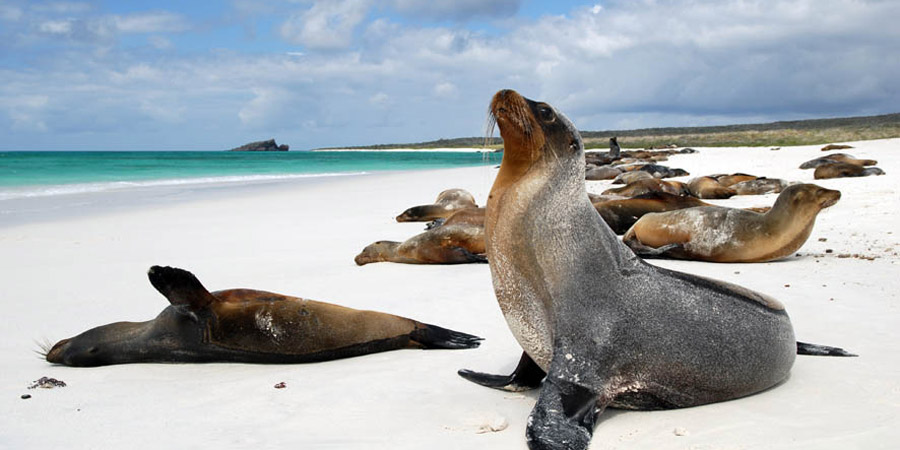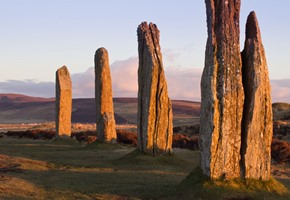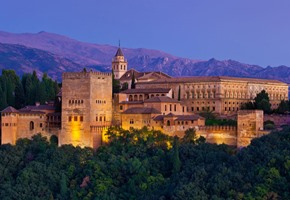The Galapagos Islands are 562 miles west of Ecuador in the South Pacific Ocean. The volcanic islands sit both sides of the Equator, and today are probably most famous thanks to Charles Darwin's fateful voyage. Home to species of plants and animals that live nowhere else on earth, the Galapagos Islands offer a peek into the 'living laboratory' of evolution. Visit the archipelago on luxury train holidays and see the vast array of unique endemic species that inspired Darwin in 1835, and changed our view of the world.
Created by vast underwater volcanic eruptions, the archipelago sits on the equator, almost six hundred miles off the coast of South America. Alone in the Pacific Ocean, on the group of small islands, life has evolved independently from anywhere else on Earth. The first Europeans to set foot on the islands arrived by accident, they were stranded on the volcanic shores for five days, until the wind changed and they could escape. These men described the islands as hell on earth. The islands inhabitants were relatively undisturbed by humans for thousands of years. The first permanent human inhabitant was a marooned Irish sailor, who made the islands his home for two years from 1807 to 1809. No evidence has ever been found of permanent human habitation before this time, so the islands animal inhabitants have no innate fear of humans.
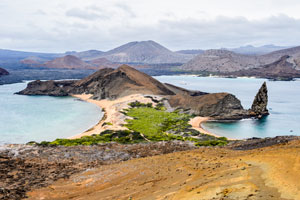
After the first accidental visit from Europeans, the islands were again seemingly forgotten about. They weren't recorded on any maps, had no name and even their existence was doubted. Sailors referred to the islands as Las Encantadas, 'The Enchanted'. It wasn't until the late 1500s that they were finally added to a map. When the existence of the islands was confirmed, ships began setting sail for them. Pirates were the first to arrive. They based themselves on the islands as they were perfectly situated to launch raids on Spanish galleons carrying gold from South America.
The next wave of settlers to the Galapagos were attracted to the treasure the islands themselves held. The oceans surrounding the Galapagos are home to a large number of Sperm Whales. Once this knowledge got out, whaling ships flocked to the islands, and stories of encounters with these 'monsters' became commonplace. But it wasn't only the sperm whales that were in danger from the newfound human interest in the archipelago. Ships needed a supply of fresh food. The giant tortoises living on the Galapagos Islands could survive months without water, meaning they were more than suitable to supply food for long sea voyages. In just 200 years, more than 200,000 Galapagos Tortoises' were taken from the islands to be used as food for sailors. On some islands, tortoises were completely wiped out.
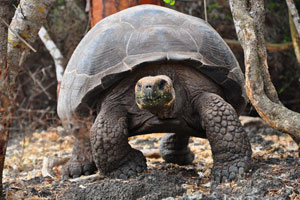
As more people visited the islands, a more complete picture was built up of their terrain. One of the ships to visit the islands was the HMS Beagle. The survey ship made a brief five-week stop on the islands after three years spent charting the South American coast. The HMS Beagle brought a twenty-six year old Darwin to the islands, which finally led to the publication of The Origin of Species.
The islands were first named, Insulae de los Galopegos (Islands of the Tortoises), after the giant tortoises that live there. It was these tortoises, along with the now famous finches, that helped steer Charles Darwin towards his theory of evolution. On his visit to the islands he noted that the finches living there varied from island to island. It was also mentioned to him that the same occurred with the tortoises on each island.
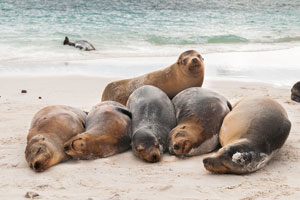
Charles Darwin only ever spent five weeks on the Galapagos Islands, but while he was there he collected numerous specimens of the plants and animals native to the islands. It was on the long voyage home his attention was caught by the mockingbird specimen he had collected. He had specimens from four different islands, he noted that two of the birds were the same, while the other two were both different. This realisation that birds from different islands had different characteristics led Darwin to his realisation that the animals had changed to suit their environment. This began to steer him towards his famous theory of evolution.
Today the Galapagos Islands can be visited on luxury train holidays to South America. Take the chance to walk in the footsteps of Charles Darwin, and see for yourself the islands that changed our view of life on Earth.

